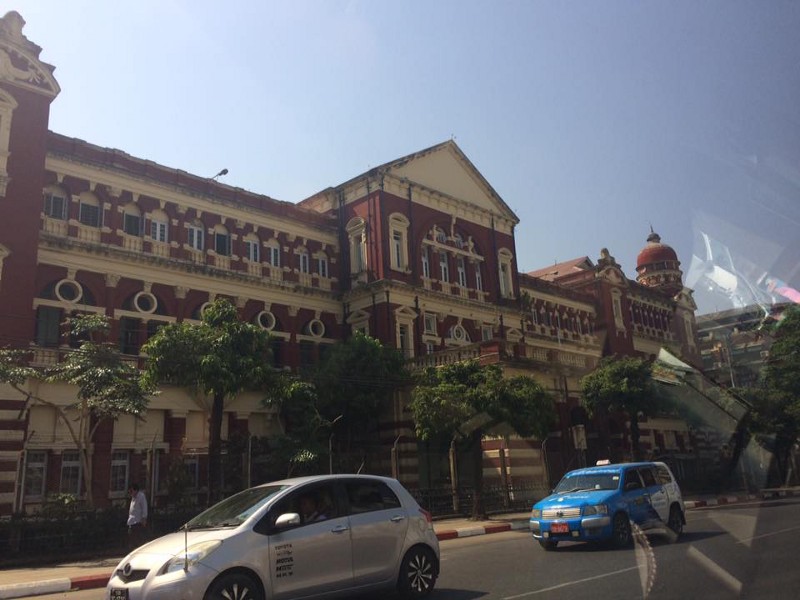Architecture and economy in Yangon
Who builds buildings and why?
A city’s architecture can often be determined by how much money is swishing around at the time of expansion; its aesthetic legacy can be determined by how history regards the architectural movements of those busy times. Ask Sheffield, ambitiously redesigned to be the last word in futuristic concrete Sixties regeneration; it worked, in that few people said those words again without a curled lip.
As Rangoon, Yangon’s centre benefited from Victorian pride — think of South Kensington’s museum sector but writ smaller and more often — and then again in the Thirties.
The result is pleasing. There’s a solidity to its downtown buildings that is resisting any temptation to reboot. There is some delapidation; the ravages of time, climate and neglectful regimes like the junta only recently dissolved have left some beautiful old piles seeming to be held up mostly by plant-life. But as the country awakens from self-imposed commercial exile and rides the tiger of the booming Asian economy, hopefully these will be restored to help a pretty city get even nicer.
Compared to Phnom Penh, Yangon doesn’t go in much for the grand public monument: perhaps all that religious immensity satiates the need for secular showpieces. What it does have is a People’s Park, winningly bonkers in its lo-fi fun: enormous fibreglass fruit, chirpy music, crap mazes, a roller-coaster and various secluded places in which couples were lovingly lolling into the early evening.
— — — — — — — — -
Yangon’s central railway station.
The central railway station has seen better days; Myanmar is at the stage of development in which rail travel is largely the preserve of the poor. However, the building’s bones are beautiful, and perhaps one day someone will have the will and the wedge to polish up its beauty.
Inside one of the railway station’s two entrance halls.
Ooh, The Strand, love.
It’s not all Buddhism, and in a town overshadowed by the golden aura of the Shwe Dagon Pagoda, the other religions obviously feel the need to show off a little too. The Hindu temple, which I sadly didn’t manage to snap, was colourfully and liberally ladled with ornament; here, Catholicism clears its throat.
The old colonial Telegraph Office.
Stunning Redevelopment Opportunity!
A fixer-upper.
A being-fixed-upper.
The plethora of pleasures in the People’s Park. What would you vote: Stone Garden? Musical Fountain? Jungle Toys? Lovers’ Lane?
The most two-dimensional shrubbery this side of a Hornby railway set.
This wasn’t the only motor I saw emblazoned with this wordy decal. “I love to have fun. I love my family and friends. I love this beautiful planet Earth. The reason why I choose this car is because it will totally satisfy my requirements for outdoor living well — tomorrow, where shall we go?” Well, quite.
Up at 6am and whizzing toward Yangon airport, I noticed a fully-kitted, 11-a-side, reds-v-blues football game. Immediately had a work idea and sent an email to colleagues. Never stop observing, never stop thinking.
…and round the corner, a little less formal but presumably no less keen, I just about managed to snap the “bricks for goalposts” I mentioned the other day.
Originally published on Facebook, 24 Mar 2017.

















